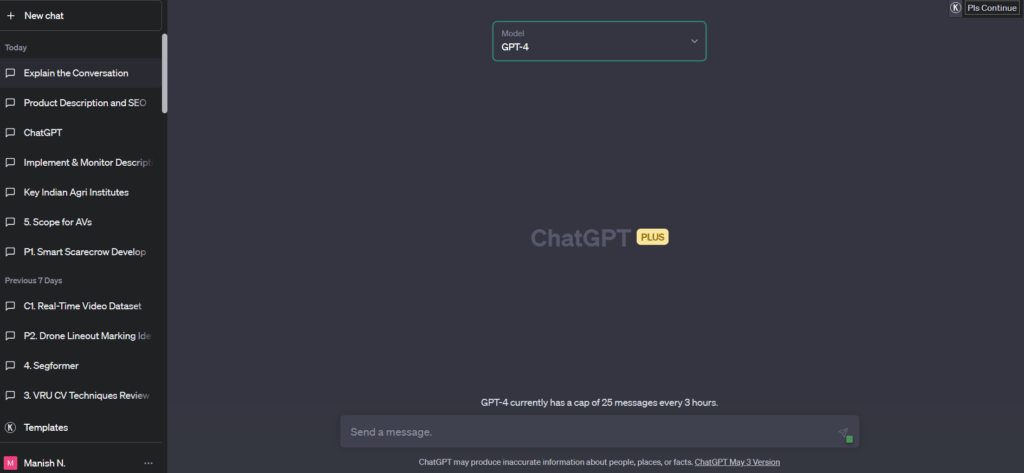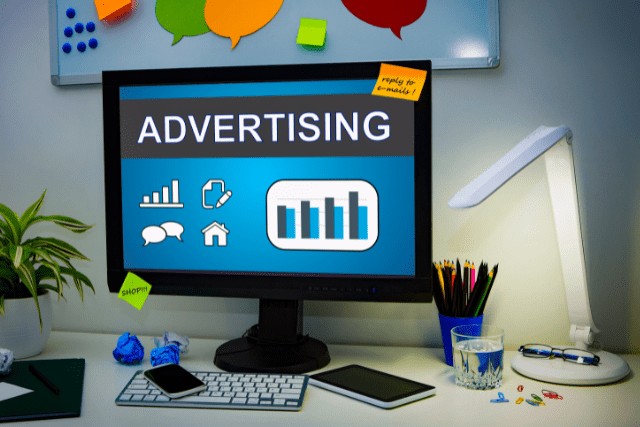Do you find it exhausting to devote countless hours crafting product descriptions for your online shop? In this blog post, we’ll explore how ChatGPT, an innovative tool from OpenAI, can streamline your product description process.
From generating persuasive text to saving valuable time and resources, discover how ChatGPT can revolutionize your content strategy, engage your audience more effectively, and, ultimately, boost your sales. Unleash the potential of AI, save time, efforts and elevate your product descriptions to new heights!
Table of Contents
TL;DR
Describing a product can be as tedious as watching paint dry. Unless, of course, you have a trusty assistant to do the job for you. That’s where ChatGPT comes in – the ultimate tool for writing compelling product descriptions that pop! No more struggling to find the right words to describe your product’s benefits.
With ChatGPT’s cutting-edge AI technology, you can say goodbye to the headache of rewriting the same tired descriptions repeatedly. Forget about dull product descriptions that send your prospective customers snoozing. ChatGPT provides a witty, conversational voice that ensures your products stand out.
From fashion to tech, whatever your product, AI has got you covered. Say hello to snappy, engaging, and, most importantly, compelling product descriptions. All you have to do is sit back, relax, and let ChatGPT do your hard work. It’s time to level up your product game – with ChatGPT on your side, you’ll be unstoppable!
Introduction
In the dynamic world of digital marketing, content creation has always been the cornerstone of a successful strategy. As the marketplace grows increasingly competitive, businesses constantly seek innovative ways to stand out and connect with their audiences. One such innovation that has significantly transformed the content landscape is Artificial Intelligence (AI).
AI has proven to be a game-changer, offering tools that automate and enhance various aspects of content creation. From generating blog post ideas to crafting engaging social media posts, AI redefines how businesses create content. Among the various AI tools available, one that stands out for its impressive capabilities is ChatGPT.
ChatGPT, developed by OpenAI, is a powerful language model that can understand prompts and generate human-like text in response. This technology can be valuable for businesses, mainly when writing product descriptions. A well-crafted product description can differentiate between a browser and a buyer. But writing unique, persuasive descriptions for every product can be daunting. This is where ChatGPT comes in. With its ability to generate detailed and compelling text, businesses can leverage ChatGPT to create persuasive product descriptions that highlight the features of a product and connect with customers on a deeper level.
In the following sections, we’ll delve deeper into how ChatGPT can revolutionize how you write product descriptions, saving you time and resources and potentially boosting your sales.
Understanding ChatGPT
It is a state-of-the-art AI developed by OpenAI. It’s a language prediction model, which predicts the next word in a sentence based on the words that came before it. This technology, called Generative Pretrained Transformer (GPT), has undergone several iterations, improving and expanding its capabilities.
The “Chat” part of its name indicates its conversational capabilities. ChatGPT can generate remarkably human-like text, making it a powerful tool for various applications, from customer service chatbots to content creation.
So, how does it work? It starts with a process called ‘training.’ The model is trained on a diverse range of internet text, learning patterns, and structures in human language. However, it’s important to note that ChatGPT doesn’t know specifics about which documents were part of its training set and doesn’t access any personal data unless explicitly provided in the conversation.
Once trained, the model can generate unique responses to prompts, making it a dynamic tool for content creation and writing your product descriptions. You give it a prompt – for example, the start of a sentence or a brief about a product – and the model generates a continuation, trying to match the style and content of the prompt as closely as possible.
The natural beauty of ChatGPT lies in its versatility and adaptability. It can generate text in various styles and tones for multiple purposes, making it a flexible tool for businesses of all types and sizes.

The Importance of Compelling Product Descriptions in e-commerce businesses
Product descriptions are a crucial aspect of your online store. They provide customers with essential information about the product, its features, benefits, and how it can address their needs or solve their problems. But beyond being merely informative, product descriptions have the power to persuade. A well-crafted product description can significantly impact sales, turning casual browsers into committed buyers.
Persuasive product descriptions are vital in influencing the customer’s buying decision. They act as a virtual salesperson, convincing customers of the product’s worth and how it is a better choice compared to similar products in the market. When done right, they can effectively communicate the value proposition of your product, resulting in higher conversion rates.
So, what do you think makes a product description persuasive? Here are a few key elements:
- Targeted: A persuasive product description is written with a clear understanding of the target audience. It speaks their language, addresses their needs, and resonates with their values and preferences.
- Benefit-focused: While it’s important to highlight the features of a product, focusing on the benefits can be more persuasive. Customers want to know how the product can improve their lives or solve their problems.
- Clear and Concise: Persuasive descriptions are easy to understand. They avoid technical jargon and present information in a clear, concise manner.
- Emotive: Great product descriptions evoke emotions. They paint a picture of how the product will make the customer feel or the experience it will provide.
- SEO-friendly: Including relevant keywords helps the product rank higher on search engines and ensures that the description aligns with the terms customers use when searching for the product.
Creating persuasive product descriptions for every item in your inventory can be daunting. However, with AI tools like ChatGPT, you can generate compelling descriptions efficiently, giving you more time to focus on other aspects of your business. In the next section, we will delve into how ChatGPT can assist in crafting persuasive product descriptions.
How ChatGPT Can Help Write Product Descriptions?
ChatGPT is an impressive tool that can take your product descriptions to the next level. Its ability to understand and generate human-like text makes it a powerful ally in crafting narratives that are not only informative but also persuasive. Let’s explore how:
1. Quick Generation of Unique and Persuasive Descriptions: ChatGPT can generate text quickly, significantly reducing the time it takes to write product descriptions. All you need to do is provide a prompt or a brief that includes essential information about the product. Based on this input, ChatGPT generates a unique description, persuasively incorporating your product’s features, benefits, and selling points.
2. Creation of Variety for A/B Testing: ChatGPT can generate multiple versions of a product description, each with a slightly different angle or focus. This is invaluable for A/B testing, where you can test other descriptions to see which resonates most with your audience and leads to higher conversions.
3. Writing Descriptions for Different Audiences: ChatGPT’s ability to adapt its writing style based on the prompt allows you to effectively target different audiences or demographics. For example, you could prompt ChatGPT to write a description for the same product that appeals to millennials and baby boomers. This versatility is handy for businesses with diverse customer bases.
In essence, ChatGPT can drastically enhance the process of writing product descriptions. It provides a blend of efficiency and creativity, generating descriptions tailored to your products and audience, ultimately driving more sales and improving your bottom line.
Benefits of Using ChatGPT for Product Descriptions
Incorporating ChatGPT into your content creation process can bring several significant benefits, especially when writing product descriptions. Here are a few key advantages:
1. Saving Time and Resources: Writing persuasive product descriptions requires significant time and resources. With ChatGPT, you can generate compelling narratives in a fraction of the time, freeing you to focus on other important areas of your business. This efficiency can also translate into cost savings, as you won’t need to hire additional staff or outsource your content creation.
2. Consistency in Brand Voice: Maintaining a consistent brand voice across all your product descriptions can be challenging, particularly if you have a large inventory or multiple people writing your descriptions. ChatGPT can help ensure consistency by generating text that aligns with the tone and style of your brand based on the prompts you provide. Whether your brand voice is professional, casual, quirky, or sophisticated, ChatGPT can adapt to match it.
3. Ability to Easily Update Descriptions: Product details may change over time, and your marketing strategy may evolve. With ChatGPT, updating your product descriptions to reflect these changes is straightforward. Simply provide a new prompt with the updated information or desired focus, and ChatGPT will generate a revised description quickly.
4. Scalability: If your business grows and you need to add more products to your catalog, ChatGPT can quickly scale with you. It can generate as many product descriptions as you need, making it a sustainable solution for your content needs.
5. Personalization: ChatGPT can create product descriptions tailored to different customer segments, enabling more personalization in your marketing efforts. This can lead to increased customer engagement and conversion rates.

Tips for using ChatGPT for writing compelling product descriptions
Getting started is straightforward if you’re looking to take advantage of ChatGPT’s capabilities for your product descriptions. Here are some steps to guide you:
Understanding ChatGPT
Before you begin, take some time to understand how ChatGPT works. Familiarize yourself with the concept of prompts and how the model generates text based on these prompts. ChatGPT uses machine learning algorithms to generate human-like text based on its prompts.
The prompts can be questions, statements, or keywords that provide context for the model to generate its response. To use ChatGPT effectively, it’s important to remember that the reactions are based on statistical probabilities, so there may be instances where the generated text may not be entirely accurate or relevant to the prompt.
It’s also important to be specific and clear with your prompts to ensure the model gets the most relevant response possible. Using ChatGPT requires you to understand how the model works and how to phrase your prompts to get the most accurate and appropriate answers.
Define Your Product Information
To generate a compelling product description, you will need to provide ChatGPT with comprehensive product information. This includes the product’s features, benefits, target audience, and other relevant details. I’d like to point out that understanding your product and its offers to potential customers is essential.
Here are some key elements to consider when defining your product information:
- Features: What are the specific features of your product? This could include physical attributes, technical specifications, or special functions that differentiate your product.
- Benefits: What advantages does your product offer customers? Please consider how your product solves a problem or meets your target audience’s needs. This could include saving time or money, enhancing productivity, or improving overall quality of life.
- Target audience: Who is your product meant for? When defining your target audience, consider demographic information, lifestyle preferences, and purchasing behavior. This will help you tailor your product description to appeal to those individuals.
- Other relevant details: Are there any other important aspects of your product that potential customers should know about? This might include information about warranties, return policies, or additional services you offer.
By providing ChatGPT with comprehensive product information that includes these essential elements, you can help ensure that your product description is engaging, informative, and effective at attracting potential customers.
Craft Your Prompts
You can use this information to craft a prompt for ChatGPT. So that you know – the prompt should align with your brand voice and include all necessary details about the product. Remember, the more specific your prompt, the more tailored the output. Prompt: Our brand XYZ is launching a new line of skincare products especially designed for people with sensitive skin.
We would like a ChatGPT AI-generated social media post highlighting our new products’ key benefits and ingredients while maintaining a compassionate and soothing tone. We want to emphasize that our products are free of harsh chemicals and fragrances and include oatmeal, aloe vera, and chamomile to calm and soothe sensitive skin.
We would also like to highlight that our products have undergone extensive testing and are dermatologist approved. Please use key phrases like “gentle care,” “soothing relief,” and “fragrance-free” in your post to appeal to our target audience. Also, make sure to mention that our products are suitable for all skin types, including oily and dry skin, providing the same gentle care to everyone.
Generate and Review Descriptions
Once you have your prompt, you can input it into ChatGPT to generate your product description. I think it’s essential to review the generated text since there might be a need for minor edits or adjustments to align it with your brand voice or specific style guidelines. Incorporating your knowledge and creativity into the description is beneficial and ensures it’s convincing, engaging, and informative.
Reviewing the text before publishing or sharing it will guarantee that it makes sense and has a consistent tone with your branding. You can also utilize editing tools or seek professional assistance to refine your product descriptions and make them stand out.
Implement and Monitor
Implementing and monitoring your product description involves updating your product page with the finalized description and conducting A/B testing if necessary. Once implemented, you need to monitor key metrics such as engagement and conversion rates and gather customer feedback and reviews.
By tracking these metrics and analyzing customer responses, you can refine and improve your product description over time. This iterative process allows you to make data-driven refinements, optimize engagement, increase conversion rates, and enhance customer satisfaction. Continuously monitoring performance ensures that your product description remains effective and aligned with your customer’s needs and preferences.
Keep Improving
If you encounter persistent issues or limitations with ChatGPT’s responses, provide feedback to OpenAI. Your feedback can contribute to the ongoing improvement and refinement of the model through retraining processes.
Iteratively refine and iterate: Review the outputs generated by ChatGPT and iteratively refine your prompts based on the results. Analyze the strengths and weaknesses of the model’s responses and adjust your prompts accordingly to achieve more accurate and useful outputs.
Review the outputs generated by ChatGPT and refine your prompts based on the results. Analyze the strengths and weaknesses of the model’s responses and adjust your prompts accordingly to achieve more accurate and useful outputs.
Remember, working with AI is a process of continuous improvement. Over time, as you provide more prompts, you’ll become more adept at getting the results you want from ChatGPT.
Some best ChatGPT prompts for writing product descriptions
Writing product descriptions with ChatGPT can be significantly facilitated by crafting effective prompts. Here are some examples of prompts you could use:
- Detailed Description Prompt: “Write a detailed and persuasive product description for a premium, single-origin Colombian coffee. It’s 100% Arabica beans, medium-roast, with notes of caramel, nuts, and red fruit.”
- Benefit-Driven Description Prompt: “Write a product description highlighting the benefits of a high-end, ergonomic office chair with adjustable height, breathable mesh back, and lumbar support, ideal for people who work long hours.”
- Tone-Specific Description Prompt: “Craft a playful and fun product description for a kids’ science experiment kit that includes 20 unique experiments, is safety-certified, and is designed for kids eight and above.”
- Demographic-Specific Description Prompt: “Compose an elegant and sophisticated product description for a luxury skincare set targeted at women over 50. The set includes a day cream, night cream, and eye serum, all formulated with hyaluronic acid and vitamin C.”
- Style-Specific Description Prompt: “Provide a rustic, homey product description for a handcrafted wooden cutting board made from sustainably sourced oak.”
Remember, the more specific you are in your prompt, the more tailored the output from ChatGPT will be. Feel free to include as much detail as possible about the product and the tone, style, or format you want the description to be.
How to improve descriptions generated by ChatGPT?
Improving the descriptions generated by ChatGPT is a matter of providing the right instructions and refining the generated output. Here are some strategies to get better results:
- Be Specific with Your Prompts: The more detailed and specific your prompts, the better the output. If you want a particular style, tone, or format for the description, include that in your prompt. You can also ask for certain keywords to be used, or specify the audience the description is targeting.
- Experiment with Different Prompts: If you’re not getting the results you want, try changing your prompt. Experimenting with different ways of asking for what you want can yield different results.
- Post-Processing: Even with a good prompt, you may still need to tweak the output. This could involve correcting any inaccuracies, rephrasing awkward sentences, or adding additional details.
- Use the Iterative Process: Generate multiple versions of a description and choose the best one. You can even combine parts of different versions to create the final description.
- A/B Testing: Use different versions of descriptions to see which one resonates more with your audience. This can help you understand what kind of language and structure work best for your product descriptions.
- Continual Learning: Keep refining your prompts based on the output you’re getting. Over time, you’ll better understand how to ask for what you want in a way that gives you the best results.
ChatGPT is a powerful tool that can revolutionize how you write product descriptions, making the process faster, more efficient, and highly tailored to your needs..
Creating emotional connections through storytelling in product descriptions
Storytelling in product descriptions can be a powerful way to create emotional connections with your customers. It’s not just about listing features and specifications; it’s about crafting a narrative that resonates with your audience and makes them feel a personal connection to your products.
You can ask ChatGPT to write in an emotional tone. ChatGPT can be tailored to write descriptions that resonate with different audiences. By understanding the sentiment and language style that appeals to your audience, it can generate content that matches those preferences. ChatGPT can generate creative, engaging product descriptions that tell a story.
Descriptive, sensory language can make your product descriptions come alive. Instead of saying “this candle smells good”, for example, you might say “this candle will fill your room with the calming scent of lavender and chamomile, transporting you to a tranquil field of flowers.”
Some cons of using ChatGPT to generate descriptions
ChatGPT is great but it does have some potential drawbacks:
- Lack of Human Touch: While ChatGPT can generate human-like text, it doesn’t have a human’s personal experience or emotions. This can sometimes result in descriptions that feel less personal or lack the unique flair a human writer might bring.
- Contextual Understanding: While ChatGPT can understand context to a degree, it may sometimes miss nuances or specific contextual cues that a human would easily pick up on. This could potentially lead to inaccuracies or misunderstandings in the generated descriptions.
- Need for Oversight: ChatGPT can sometimes produce off-topic text or doesn’t fully meet the specified requirements. It may require human oversight to ensure that the generated descriptions are accurate and appropriate.
- Repetitiveness: There may be instances where ChatGPT generates repetitive text or uses certain phrases more frequently than a human writer would.
- Lack of Creativity: While ChatGPT can generate creative text based on the data it has been trained on, it can’t truly innovate or think outside the box in the way a human can.
- Ethical Considerations: There are ethical considerations around using AI for tasks traditionally done by humans, including potential impacts on employment. There’s also the potential for misuse if the technology is used to generate deceptive or harmful content.
However, with the right approach, you can use it to create compelling narratives that boost your sales and elevate your brand.
Conclusion
The potential of AI in content creation is vast, and ChatGPT, with its advanced language capabilities, is leading the way. This means a revolution in how compelling product descriptions are crafted for businesses. Generating persuasive, high-quality content quickly and consistently can significantly enhance the customer experience and boost sales.
While AI tools like ChatGPT are potent, they must replace human creativity and understanding. Instead, they should be seen as a valuable aid that can handle the heavy lifting, allowing you to focus on strategy, creativity, and other business aspects requiring a human touch.
In this ever-evolving digital landscape, embracing AI tools like ChatGPT can give your business a competitive edge. It’s an investment in your future, paving the way for improved efficiency, better customer engagement, and business growth.
With ChatGPT, the future of product description writing is here. Are you ready to embrace it?
Frequently Asked Questions
1. How can I tailor ChatGPT’s output to match my brand’s voice?
ChatGPT’s output is influenced by the prompt you provide. If you have a specific brand voice, could you include this in your prompt? For example, if your brand voice is casual and friendly, you could start your prompt with “Write a casual, friendly product description for…”
2. Can ChatGPT help with SEO in product descriptions?
While ChatGPT doesn’t inherently understand SEO, you can include SEO-related instructions in your prompt. For example, you can specify to use specific keywords in the product description.
3. How can I use ChatGPT for A/B testing of product descriptions?
ChatGPT can generate multiple variations of a product description. You can use these variations to conduct A/B testing and determine which description performs better with your audience.
4. How can I use ChatGPT for extensive inventories?
ChatGPT can help save time when dealing with extensive inventories. Once you’ve established an excellent prompt structure, you can use this to generate descriptions for multiple products. Please remember to review and adjust the output as needed.
5. How does ChatGPT handle specialized or complex products?
ChatGPT generates text based on the information provided in the prompt. Please give all the details in your prompt for technical or complex products. The AI will use this information to generate the product description.
6. What do I do if I’m unsatisfied with the product descriptions generated by ChatGPT?
If you’re not satisfied with the output, try refining your prompt. Make it more detailed, or specify the style or format you want the description to be in. Please feel free also to provide examples of what you’re looking for. Remember, it may take a few attempts to get the desired output.
7. Can I use ChatGPT to update my existing product descriptions?
Yes, you can use ChatGPT to update existing descriptions. Could you provide the current description in your prompt and specify what updates or changes you’d like made?
8. What if ChatGPT generates incorrect or misleading information in a product description?
While ChatGPT is a powerful AI, it can occasionally generate incorrect or misleading information. It’s important to review all generated descriptions to ensure accuracy. You can adjust your prompt or manually correct the output if a description contains incorrect information.
9. How do I ensure consistency across multiple product descriptions generated by ChatGPT?
To ensure consistency, could you develop a structured prompt that you can use across all products? This could include a set format for the descriptions or specific phrases you want in every description.
10. Can ChatGPT handle multilingual product descriptions?
ChatGPT has multilingual capabilities and can generate text in various languages. However, the quality of the output can vary depending on the language. For best results, always review and adjust the generated text as needed.
11. Can I use ChatGPT to generate other types of e-commerce content?
Yes, besides product descriptions, you can use ChatGPT to generate other e-commerce content, such as blog posts, marketing emails, social media posts, and more.
12. How can I scale my product description generation process with ChatGPT?
ChatGPT can significantly speed up product description generation, especially for extensive inventories. Using a well-structured prompt, you can quickly generate descriptions for multiple products. However, remember always to review the generated text for accuracy and consistency.
13. Can ChatGPT incorporate storytelling in product descriptions?
Yes, you can instruct ChatGPT to use storytelling in your product descriptions. Include this in your prompt: “Write a product description that tells a story about…”
14. Is there a difference in quality: GPT-3 vs. GPT-4?
GPT-4 represents the most recent and sophisticated iteration of the GPT series, now capable of processing images in addition to text. Its enhanced data handling and computational abilities surpass those of GPT-3, leading to heightened accuracy, creativity, and dependability when tackling intricate issues. GPT-4 exhibits a deeper understanding of dialogues, delivering responses with superior precision and correctness.







